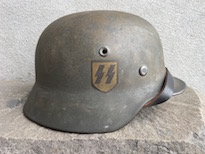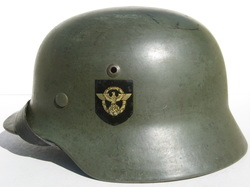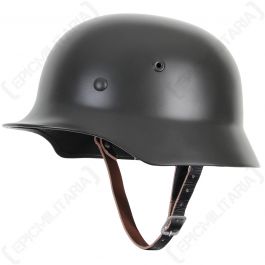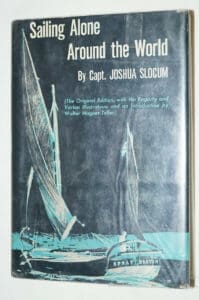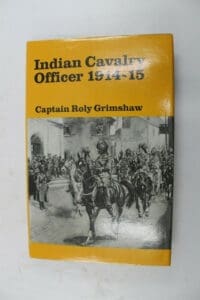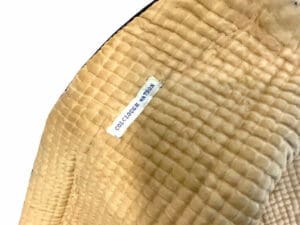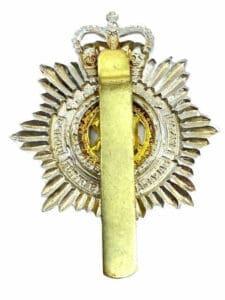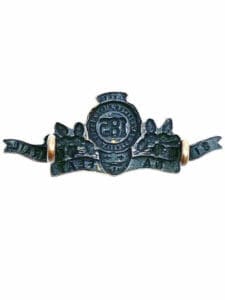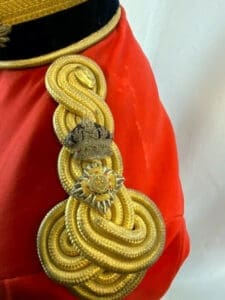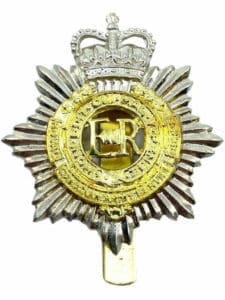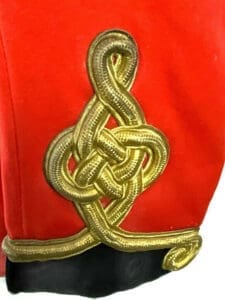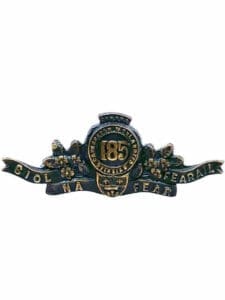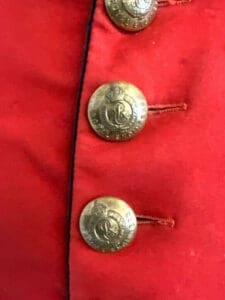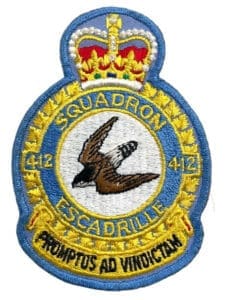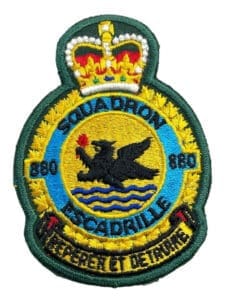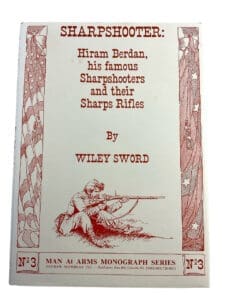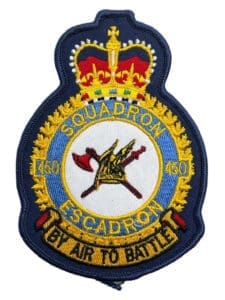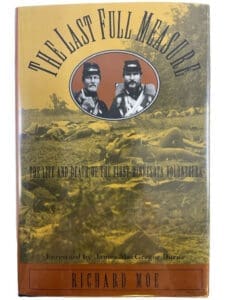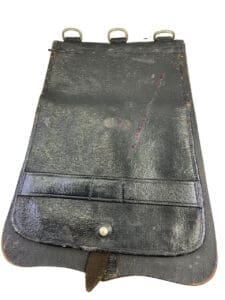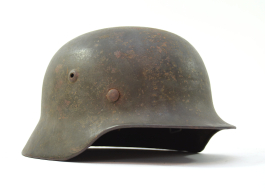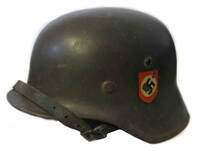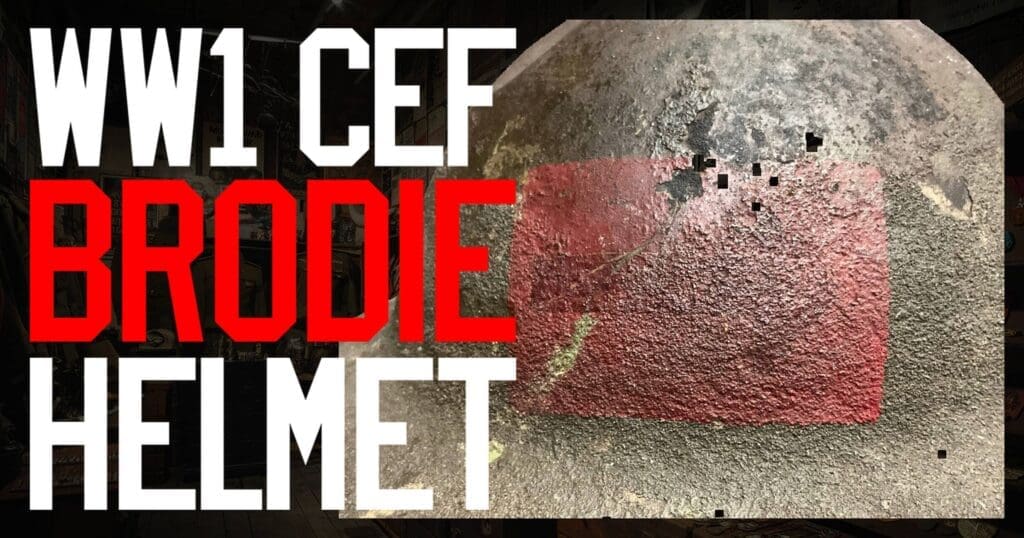The M40 helmet, also known as the Stahlhelm, is a significant piece of military history, renowned for its distinctive design and role in World War II. Its origins, construction, and various interesting facts offer a glimpse into its importance and evolution.
Origins of the M40 Helmet
The M40 helmet was introduced by Nazi Germany during World War II. It is part of the larger series of German steel helmets, or Stahlhelms, which have their roots in World War I. The initial model, the M16, was developed in response to the high number of head injuries German soldiers suffered during the early stages of the war. The M16’s design was innovative for its time, featuring a steel shell that provided better protection than the cloth and leather headgear used previously.
The M16 evolved into the M18, and later the M35, which was the direct predecessor to the M40. The M35 introduced several key improvements, such as a more streamlined shape, a lighter weight, and an improved liner system for better comfort and fit. However, as World War II progressed, the need for more efficient production methods and resource conservation led to the development of the M40 helmet.
Construction of the M40 Helmet
The M40 helmet retained many of the design elements of the M35 but incorporated several changes aimed at simplifying production. One of the most notable differences was the method of vent hole construction. In the M35, the vent holes were separate inserts fitted into the shell, but in the M40, they were stamped directly into the steel, reducing manufacturing complexity and cost.
The helmet was made from a single piece of molybdenum steel, providing robust protection while keeping weight manageable. The steel was pressed into shape using large hydraulic presses, a process that ensured uniformity and strength. The helmet’s distinctive shape, with its flared rim and sloping sides, was designed to deflect shrapnel and reduce the likelihood of direct hits penetrating the shell.
Inside, the M40 featured a leather liner attached to a metal band, which was secured to the helmet shell with split pins. This liner system was adjustable, allowing for a better fit for soldiers with different head sizes. The liner also included a leather chinstrap, which could be adjusted for length and featured a simple buckle for fastening.
Facts about the M40 Helmet
- Wide Adoption: The M40 helmet was widely used by German forces throughout World War II, including the Wehrmacht, SS, and Luftwaffe. Its design proved to be highly effective, and it became an iconic symbol of the German military during the war.
- Camouflage Variants: Many M40 helmets were painted with various camouflage patterns to match the environments in which soldiers were fighting. These included patterns for woodland, desert, and winter warfare. Some helmets were also fitted with covers made from cloth or netting to further break up their outline.
- Markings and Insignia: The M40 helmet often featured decals on either side. The right side typically displayed the national emblem, such as the swastika for the Wehrmacht, while the left side could bear branch-specific insignia, such as the Luftwaffe eagle. However, as the war progressed and resources became scarcer, the use of decals was reduced and eventually discontinued in 1943 to save on production costs and time.
- Post-War Usage: After World War II, many M40 helmets were repurposed or sold as surplus. Various countries, particularly in Europe, used these helmets for their own military or police forces. The helmets were often repainted and reconditioned, sometimes with modifications to fit new liner systems.
- Collectibility: Today, M40 helmets are highly sought after by military collectors and historians. Original examples, especially those with intact decals and original paint, can fetch high prices in the collector’s market. The helmet’s historical significance and distinctive design make it a prized artifact from the World War II era.
- Cultural Impact: The M40 helmet has left a lasting imprint on popular culture. It is frequently depicted in films, video games, and literature about World War II. Its iconic silhouette is immediately recognizable, symbolizing the German military presence of the era.
- Variations in Manufacturing: Although the basic design of the M40 helmet was standardized, there were slight variations in production due to different manufacturers. Factories in various parts of Germany produced the helmets, leading to minor differences in paint, decals, and stamping techniques. These variations are of particular interest to collectors and historians who study the nuances of military production during the war.
The M40 helmet stands as a testament to the evolution of military protective gear and the ingenuity of wartime engineering. Its robust construction, functional design, and historical significance continue to captivate those interested in military history and World War II.

Unboxing WWII German Helmets M35 M38 M40 M42 | Authentic or Reproduction | Military Antiques Toronto
Welcome back to Military Antiques Toronto! I'm Dave, and today we're diving into an intriguing unboxing session. A customer sent me a box of military helmets…
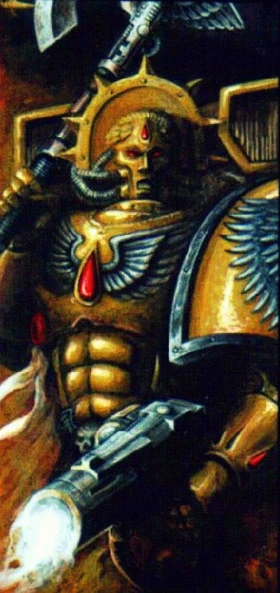
Dante
"For eleven hundred years, I have fought and I have seen the darkness in our galaxy. I have seen the vileness of the alien and the heresy of the mutant. I have witnessed the sin of possession. I have seen all the evil that the galaxy harbours, and I have slain all whose presence defiles the Emperor. I have seen what you will see. I have fought what you must fight, and I have slain what you must slay…so fear not and be proud, for we are the sons of Sanguinius, the protectors of Mankind. Aye, we
german-ww2-helmet.com
Welcome to all visitors. This website has been created by a Norwegian military historian who specializes in WW2 German helmets. Many of the artifacts shown on these pages have symbols such as swastikas and sigrunes that were used by an evil regime which terrorized the population of Europe almost f…

Wartime Military Memorabilia Auction Civil War WWI WWII Vietnam 11-24
Wartime Military Memorabilia Auction – November 2024. Selling collector Civil War, WWI, WWII, Vietnam War militaria. Buy collectible German, Japanese, US, French, Italian, Russian & British military…
German helmet M40,helmets of ww2 time-stahlhelmwk2.com
German helmet M40,helmets of ww2 time

WW2 German M40 Helmets with D-Day Chicken Wire at Mike's Militaria!
Follow the link to the "One of a Kind" page: https://www.mikesmilitaria.com/collections/one-of-a-kind-items
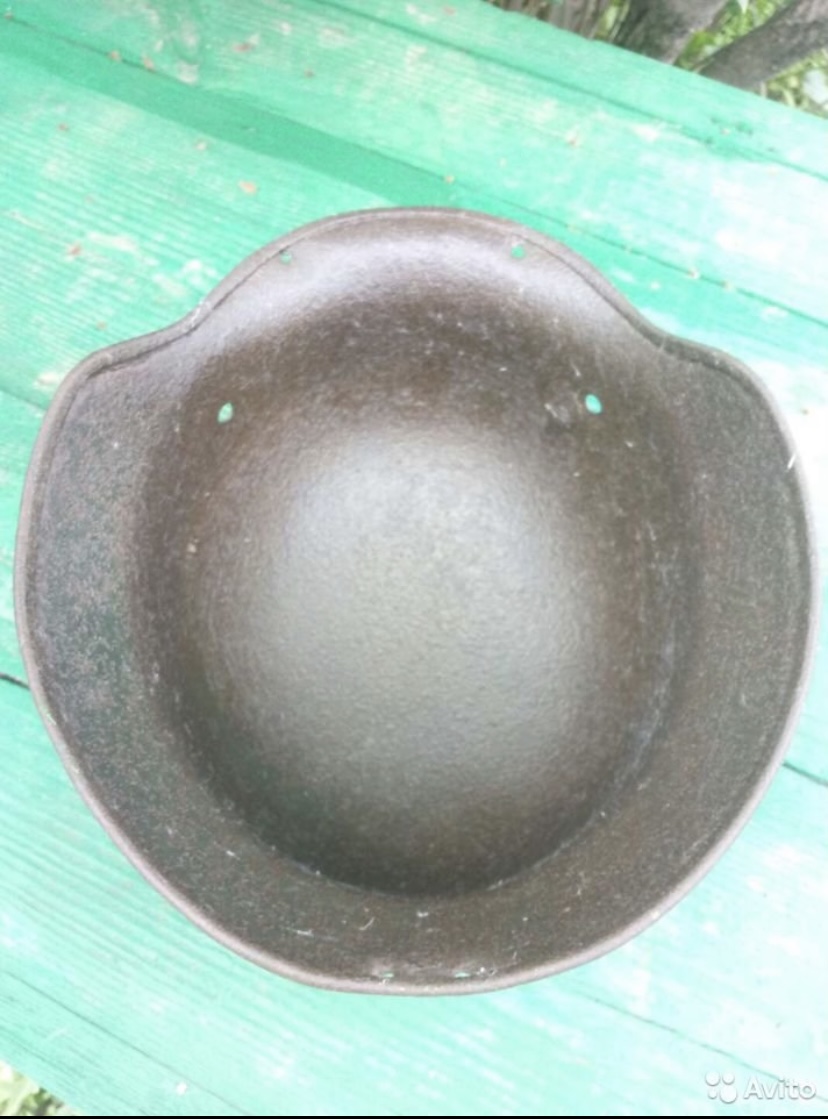
Buying ww2 German M40 or M35 Helmet
Hello everyone. I am from Russia and I am new in this forum. I am looking to buy a German Wehrmacht helmet but i don’t have a much of a knowledge.. well I don’t have at all honestly. so I have some questions first Does M40 helmets cost more or more precious than M35 Helmets or there is no differe…
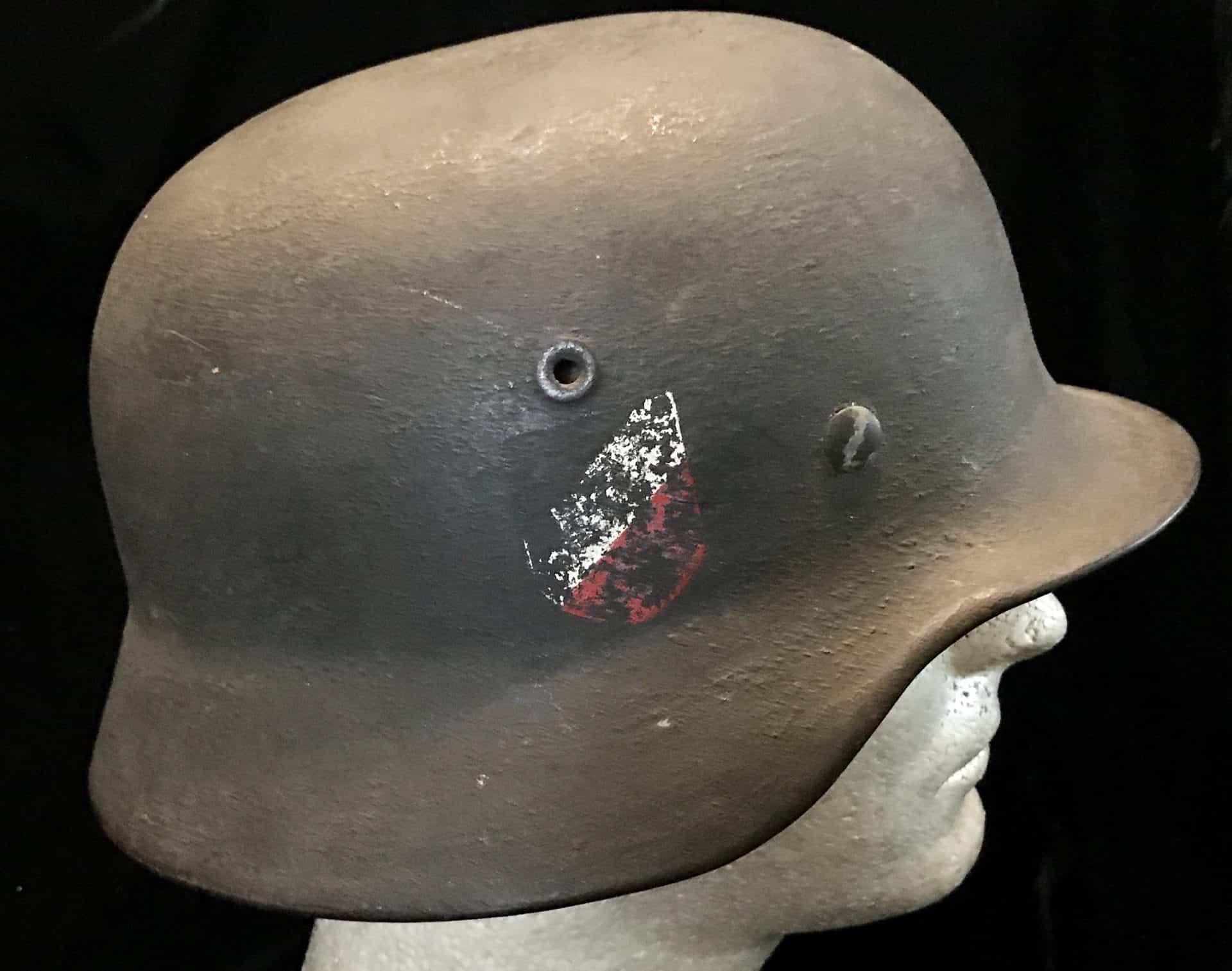
Original WWII German ARMY (HEER) M40 Double DECAL HELMET. (Stahlhelm M40) Brought Home By A U.S. Veteran Certified
SOLD Original WWII German ARMY (HEER) M40 Double DECAL HELMET. (Stahlhelm M40) Brought Home By A U.S. Veteran Certified. The stamped, sheet steel construction helmet retains a good portion of its original paint showing some wear and field usage. Eagle decal is about 25% complete. The tri color decal looks like it was applied over the hand painted field added paint so it might have been done outside the factory at an un-known time (priced accordingly) All three liner retaining rivets and both inserted ventilation bushings are all intact. . The interior of the helmet has a tan, M31 leather liner with all of the eight of its fingers intact. Original size adjustment string is not present. The interior reverse neck guard apron is lot number stamped, "22179", and the interior left side apron is stamped where the manufacturers code and size is stamped "EF66" for maker Emaillierwerk, AG Fulda, size 66. Chinstrap is not present. Has the original soldier s name painted in white inside the neck apron (see photos). Shows the expected age, wear and use. In good but used condition . Gettysburg Museum Certified (COA) provided. 100% Guaranteed to be authentic brought home by a U.S. Veteran. Sold for historic purposes only. See our other pieces on our web site. Also note when browsing our web site there are several pages of items, at the bottom of the list look for other page number! Good Veteran Bringback EXAMPLE!
WW2 German Helmets & Covers Militaria Net M40 helmet with decals
WW2 German Helmets & Covers. M40 helmet with decals for Heer and waffen SS. Parartroopers helmets with splinter cover, oakleaf, planetree covers
WWII Gear – German M40 Finnish Contract WWII Type Original Helmet
This is a rare chance to own a genuine military issue German made M40 WWII style helmet for the almost the same price as a reproduction. There is simply no comparison to a genuine combat helmet! These WWII helmet stocks are from the government of Finland and are 100% genuine German manufactured WWII type M40 steel combat helmets that were produced by German WWII helmet manufacturer Hans Römer Fabrik from Neu-Ulm (Donau-Freiberg).
M40 Stahlhelm: German WW2 steel combat helmet collectibles
M-40 is a model of Wehrmacht combat helmet modified in 1940. A number of helms of this type were found while the diggings in the Stalingrad battle fields. You can buy German World War II Stahlhelms in Stalingradfront relics store

WWII German M40 Reissued No Decal Helmet & Liner Set (ET66) | CIRCA1941
This original WWII German M40 helmet has an exceptional combat-used appearance. Following use, the helmet underwent a wartime refurbishment, where it was painted inside and out in a feldblau finish. The helmet s inside brim is size stamped ET66, along with the lot number of 5061, denoting 1940 production by the Eisenhüttenwerke, Thale factory. It comes complete with its original leather liner and steel-buckled chinstrap – both of which show heavy and consistent use. Interestingly, the liner has a reenforced aluminum band, which is most commonly seen among M35s, but is also consistent for early-production M40s. The helmet s split pins and washers are all original and show no signs of tampering.
German Helmet,M35,M40-Military Harbor
We provide exact reproduction German Empire,ww1,ww2 German Empire,Third empire,German Helmet for reenactors
German M40 Helmet- Vet Bring Back
This Helmet was brought home by my Great Uncle. I wish I knew more about his military service, but sadly, I don't. The helmet is a Model 40 Double-Decal Field Police, which was the combat leg of the Nazi Military Police. They typically served with SS units, but not always. Until the late 1980's, …

GERMAN M40 HELMET REPLICA COMPARISON
german ww2 m35/m40 helmet replica comparison as suggested by youtuber 'Landsturm'
By The Sword, Inc. – German WWII M40 Helmet Green Reproduction
Our German WWII M40 Helmet Green Reproduction is a replica of a German WWII M-40 Stahlhelm and will appeal to WWII military collectors and re-enactors. The M40 helmet is similar to the M35 Helmet except the air vents are stamped directly into the shell to reduce production costs. The M35 air vents were separate hollow steel rivets. Made from heavy gauge steel our M40 German Helmet has all the correct details. The edges of the helmet shell are rolled, the air vents are pressed and includes the proper markings. We include a leather M-31 liner attached with 3 split rivets and the correct leather chinstrap with buckle. The color matches original matt finish. This M40 German Helmet is available in 3 German sizes of 58, 60 and 62.

Very Rusty WW2 German M40 Helmet Restoration and Preservation. Artifact from the battlefield
Rusty WW2 German Helmet Restoration. I found this rusty German helmet with a metal detector on a WWII battlefield. This helmet was very rusty. But when I was…

Finnish Contract German M40 WWII Type Steel Helmet
Authentic military surplus German M40 WWII Type Steel Helmets from the Finnish M40/55 contract.
HELMETS OF WAR
SPECIALIZING IN ALL ORIGINAL WW2 GERMAN HELMETS

Factory Paint colors
Introduction With this page I just want to make collectors aware of the many paint variations that exist and get some examples on one page to make it easier to review the differences. Paint colors …
Original German WWII Refurbished Helmets
Original German WWII Refurbished Helmets
By The Sword – German WWII M40 Helmet Green Reproduction
Our German WWII M40 Helmet Green Reproduction is a replica of a German WWII M-40 Stahlhelm and will appeal to WWII military collectors and re-enactors. The M40 helmet is similar to the M35 Helmet except the air vents are stamped directly into the shell to reduce production costs. The M35 air vents were separate hollow steel rivets. Made from heavy gauge steel our M40 German Helmet has all the correct details. The edges of the helmet shell are rolled, the air vents are pressed and includes the proper markings. We include a leather M-31 liner attached with 3 split rivets and the correct leather chinstrap with buckle. The color matches original matt finish. This M40 German Helmet is available in 3 German sizes of 58, 60 and 62.

WWII German Luftwaffe Helmet M40 – Trade In Military
This is a nice original WW2 M40 Luftwaffe single decal helmet. The Luftwaffe decal is about 95% intact. The helmet is stamped Q64 manufactured by Quist and is size 64. Production stamp is DN 231 ? difficult to make out . the helmet surface shows 99% of its original factory paint , at some stage…
German Helmet Shell and Liner Sizes
Although the old helmet had proven itself in the First World War, its form, weight and overall appearance were no longer popular.
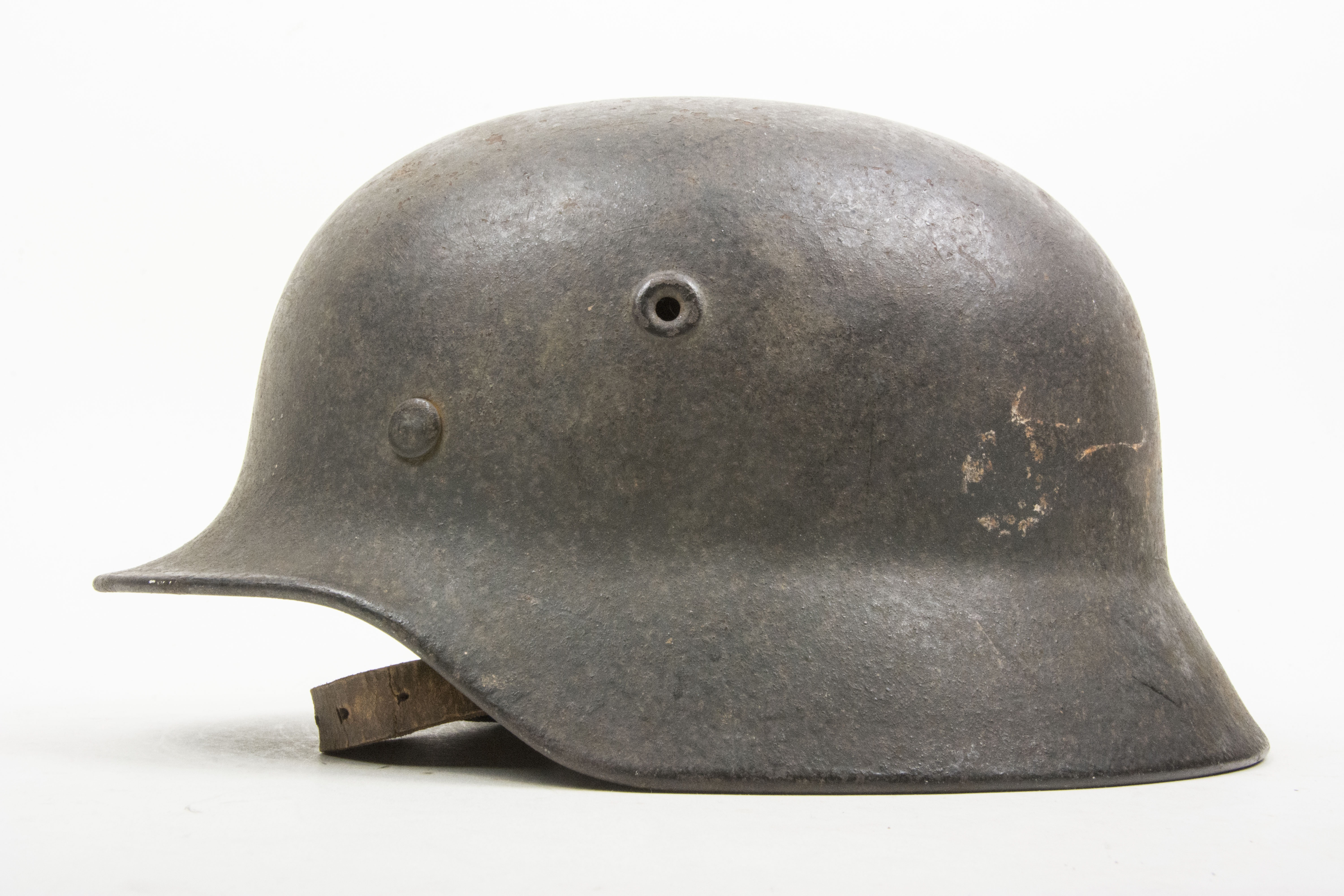
Helmet – M40 – Q66
Arguably the helmet was the most recognizable part of the individual German soldiers appearance. With a design that derived from the type used in world war one, the German helmet offered more protection then ones used by it’s enemies. The quality field gray painted steel helmet with two decals and rolled steel rim and leather liner was a labor intensive product and simplified as the war progressed. The earliest model helmet used in world war two was the model 35 or M35 Stahlhelm. During the war the helmet was simplified in 2 stages. In 1940 the airvents changed from separate rivets affixed to the helmet shell to stamped in the main body of the shell. In 1942 a new model was introduced where the rim of the shell was left sharp and not rolled over as previous models. These models are known in the collector community as M40 and M42. The low sides that protect the neck and ears, the tell tale design that the Germans introduced in 1935 can still be seen in modern day army helmets. Model: M40 Decal: None, this type with the marking in this position doesn’t seem to be issued with decals. Paint: Factory applied dull field gray paint with rough aluminium oxide. Markings: Q66 and S344, both in the rear. Chinstrap: Marked RFNr. 0/0494/0008 Maker: Quist, Esslingen. Size: Shellsize 66, headsize 58 cm Batch number: S344 Year: 1944 Notes: The Quist firm produced the size 64 M40 helmet shell right up till late in 1944 whilst the other companies all adopted the M42 model. This helmet was made for all the branches just like the M42 helmet without decal. The helmet originally came from the United States where it was probably taken after the war was over. The helmet is nicely named to Unteroffizier Heinz Schmidt.
The main German helmets of the World War 2
The history of Nazy Germany is only 12 years, probably that’s why Deutsches Reich military relics are in so popular among collectors all over the world. In this article we will talk about German helmets of the WW2 period.

How to Identify a Fake WWII Helmet
At CIRCA1941 we have handled hundreds, if not thousands, of WWII helmets. Being able to sort the real from the fake is essential in this…
Knight's Armament
When your life is on the line

German M40 Heer hkp (SE) Helmet 64
The helmet shell is a Model 1940 hkp (SE – Sächsische Emailler-und Stanzewerke) maker with 64 size marker & batch number 1017. The liner is suitable aged as is the maker marked chinstrap (1940) and the 'Eagle' is our museum quality reproduction. The shell show medium wear but many areas are starting to rust and are worn through the paintwork especially on the inside. The helmet is not textured and has been protected with museum wax.
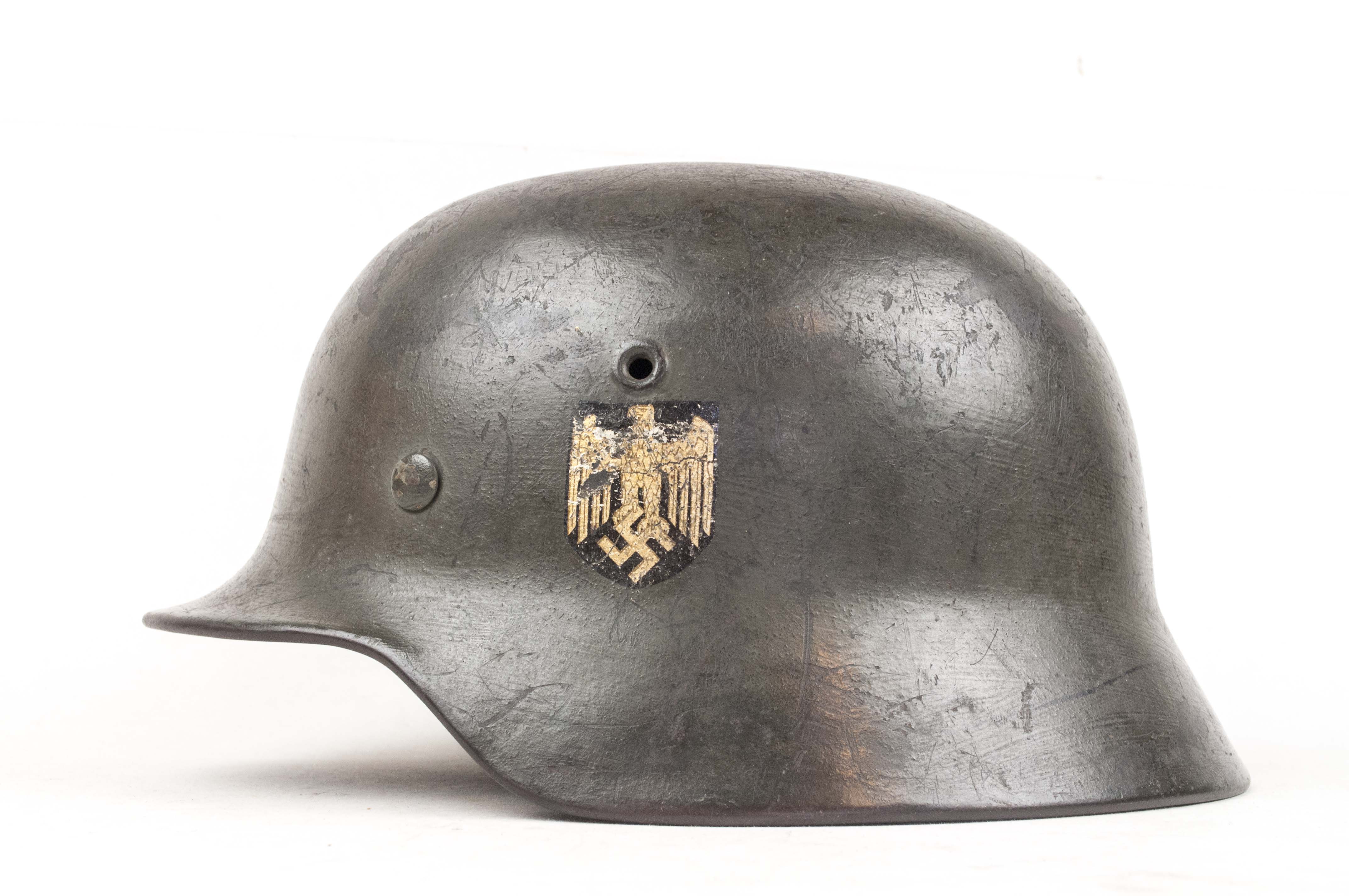
Helmet – M40 – ET66 – Heer single decal, brush overpaint
Arguably the helmet was the most recognizable part of the individual German soldiers appearance. With a design that derived from the type used in world war one, the German helmet offered more protection then ones used by it s enemies. The quality field gray painted steel helmet with two decals and rolled steel rim and leather liner was a labor intensive product and simplified as the war progressed. The earliest model helmet used in world war two was the model 35 or M35 Stahlhelm. During the war the helmet was simplified in 2 stages. In 1940 the airvents changed from separate rivets affixed to the helmet shell to stamped in the main body of the shell. In 1942 a new model was introduced where the rim of the shell was left sharp and not rolled over as previous models. These models are known in the collector community as M40 and M42. The low sides that protect the neck and ears, the tell tale design that the Germans introduced in 1935 can still be seen in modern day army helmets. Model: M40 Decal: Heer Paint: In total 2 layers. 1. Factory applied dull field blue gray paint with rough aluminium oxide with a factory applied Heer decal. 2. Brush applied re-issue green paint around the decal Markings: ET66 – 318 Maker: Eisenhüttenwerke, Thale. Size: Shellsize 66, headsize 59 cm Batch number: 318 Year: 1940 Notes: This helmet was overpainted in the field in a green camouflage colour around the decal. This was often done on a unit scale when items lost most of their factory finish.
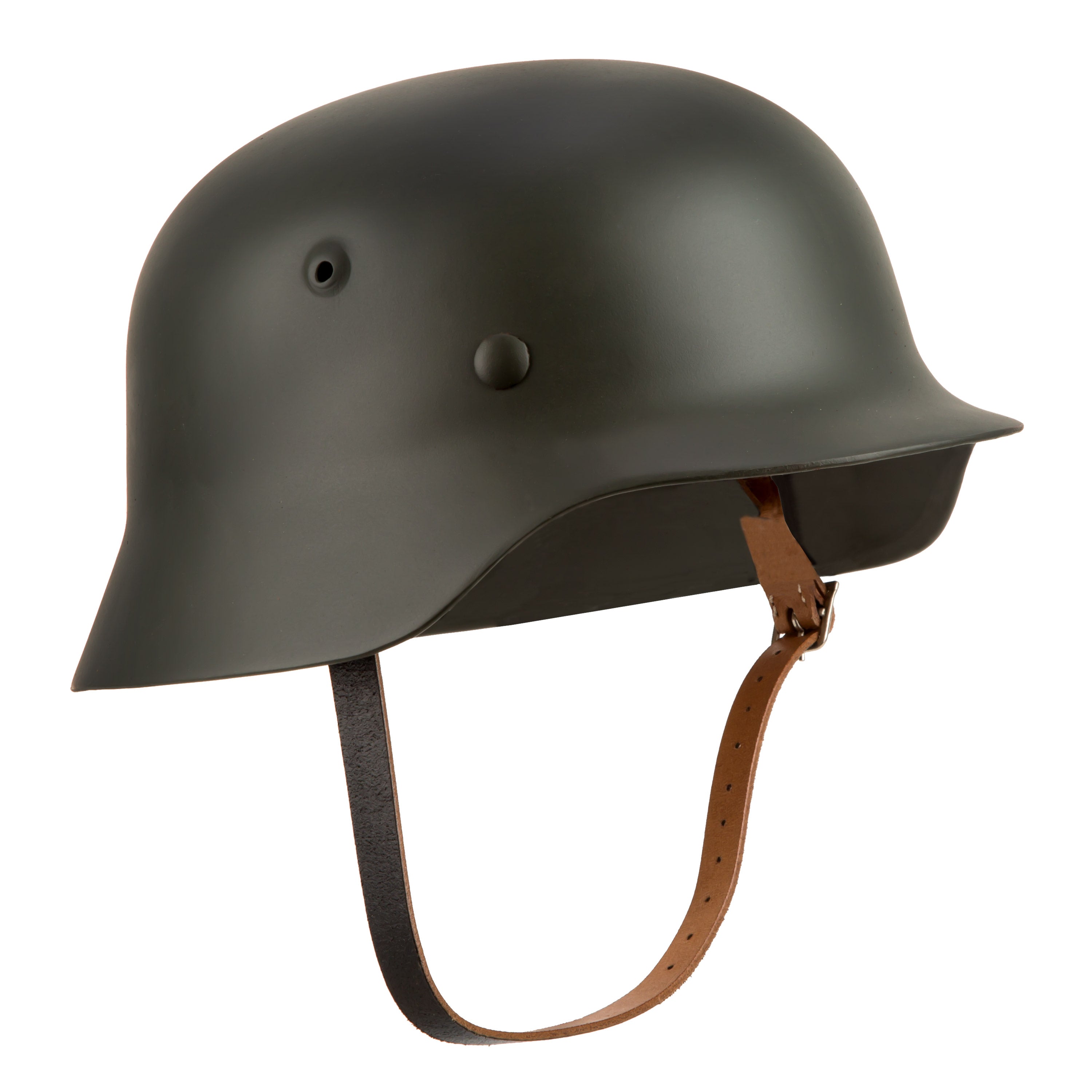
WH Steel Helmet M40
A replica of the WW II Steel Helmet M35 in its typical form with the side ventilation holes.The helmet features a leather lining and an adjustable leather chin strap. – Material: Helmet: 18G Steel / Helmet webbing: 100% goat leather / Chin strap: 100% goatskin – Weight: approx. 1,350 g This item contains non-textile ma
Question liner m40 helmet
Hello, I bought a m40 german helmet at the Ciney fair today and I was wondering if the liner is original or not. The leather does not really look new or artificially aged, but it has no size

Original German WWII Refurbished M40 Helmet Size 64 Shell
Original German WWII Refurbished M40 Helmet Size 64 Shell
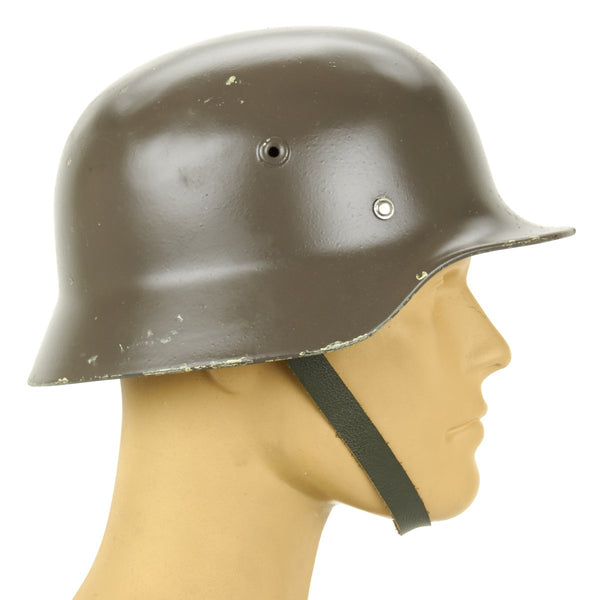
Original German M40 WWII Type Steel Helmet- Finnish M40/55 Contract
Original Item: In another military antiques coup, IMA acquired the last of all the known WWII German helmet stocks from the government of Finland. A wonderful article was written about this find in the Magazine Military Trader which you can read at this link. These helmets are 100% genuine German manufactured WWII type M40 steel combat helmets that were produced by German WWII helmet manufacturer Hans Römer Fabrik from Neu-Ulm (Donau-Freiberg). Supplied throughout WWII and then under special contract for the Finnish Army in 1955, hence, they have become known as the M40/55 helmet. However, these helmets were made in the same factory, on the same machines and by some of the very same people that produced them for Germany in WWII. They are nearly identical to WWII issue M40 helmets (and are often sold as such) with the classic rolled edge, correct steel thickness, and pressed ventilation holes. Furthermore, we have very good reason to believe that some of these shells are sanitized German WWII M35 and M40 helmets; meaning some are genuine WWII shells that had all stampings rubbed out and original paint removed to avoid the allied ban on West Germany selling war materiel after WW2. Styles and colors (Field Grey, Field Green) will vary slightly so please see photos for multiple examples. Each helmet is offered in good condition but will show storage wear, paint chips, scratches, and have dents. Some may have rust damage and stains, and many were refurbished one or more times while in service. After all, these are real military helmets that were used by actual soldiers in the defense of their country. The leather liners and chinstraps were made in Finland for the Finnish army who called it the M55 helmet; styles vary, as some of the helmets were used up until the early 1970s. Some of these may also have required drilling additional liner holes in the helmet. Occasionally these rivets may pop out, in which case we will include split pins to replace the missing rivet. The shells do however, accept our splendid reproduction M35 WWII leather helmet liner and chinstrap with reproduction WW2 split pin and washer sets. For installation of a WWII reproduction German liner please be aware that drilling new front holes in the liner, not the shell, might be required in some cases. Sizing- we offer a range of sizes, but we sell these helmets based on the interior liner size, not shell size. However, a general rule of thumb is; size 55/56cm liners are usually inside size 62 shells, size 57/58cm liners are usually inside size 64/66 shells, and size 59cm and above liners are 66/68 shells. We cannot honor requests for specific shell sizes; we only honor requests for liner size. Please make sure you measure your helmet shell prior to ordering a WWII Style German M-31 liner, as the Finnish liners are more low profile than the German style. Most likely you will need to get a smaller size liner than the one in the helmet. This is a rare chance to own a genuine military issue German made M40 WWII style helmet for the almost the same price as a Chinese or Indian made reproduction. There is simply no comparison to a genuine combat helmet! History of Finnish Combat Helmets- Finland imported tens of thousands of helmets for the Winter War of 1939-40 and the Continuation War of 1941-44, and imported again in 1955. Since IMA acquired the last of all the known helmet stock from the Finnish government you may wonder did we get German WWII marked helmets? Yes, and they will be offered at a far higher price. Did we get other types of helmets? Yes, we also received Hungarian WWII M38 (1938) helmets as well. This deal is a treasure trove of WWII era combat helmet history. History the German & Finnish Alliance- In 1938 Finland became very concerned with Stalin s Soviet expansionism and turned to Great Britain and France for support. Both Countries were under supplied themselves so Finland, perhaps reluctantly turned to NSDAP Germany for aid. AH was swift to assist supplying great quantities of materiel including thousands of German Battle Helmets. The Russians invaded Finland in 1939 driving deep into the country. The Finns resisted with amazing tenacity that has been the subject of legend and the wonderful WW2 Movie "THE WINTER WAR" (offered by IMA). The Russians paid a very heavy price and sued for peace in early 1940 keeping the invaded areas of Finland. Finland totally exhausted agreed with great regret. In the summer of 1941 AH s NSDAP War Machine invaded the Soviet Union driving everything before them. Finland whom had received so much help from Germany then rose up and drove the Soviet presence out of Finland. However Finland would not "invade" the Soviet Union, they declared themselves not to be aggressors. It is true however that the Germans recruited great numbers of Finnish "Volunteers" for their "SS UNITS" that did invade Mother Russia but that was true of all the overrun European Countries and even some others, still independent including apparently England and the United States, although these number were said to be very low. At the close of WW2 with Germany defeated Finland was highly penalized by the Soviet Union, again gave up the lost territory of 1939/40 but did manage to retain it s independence unlike so much of Eastern Europe.
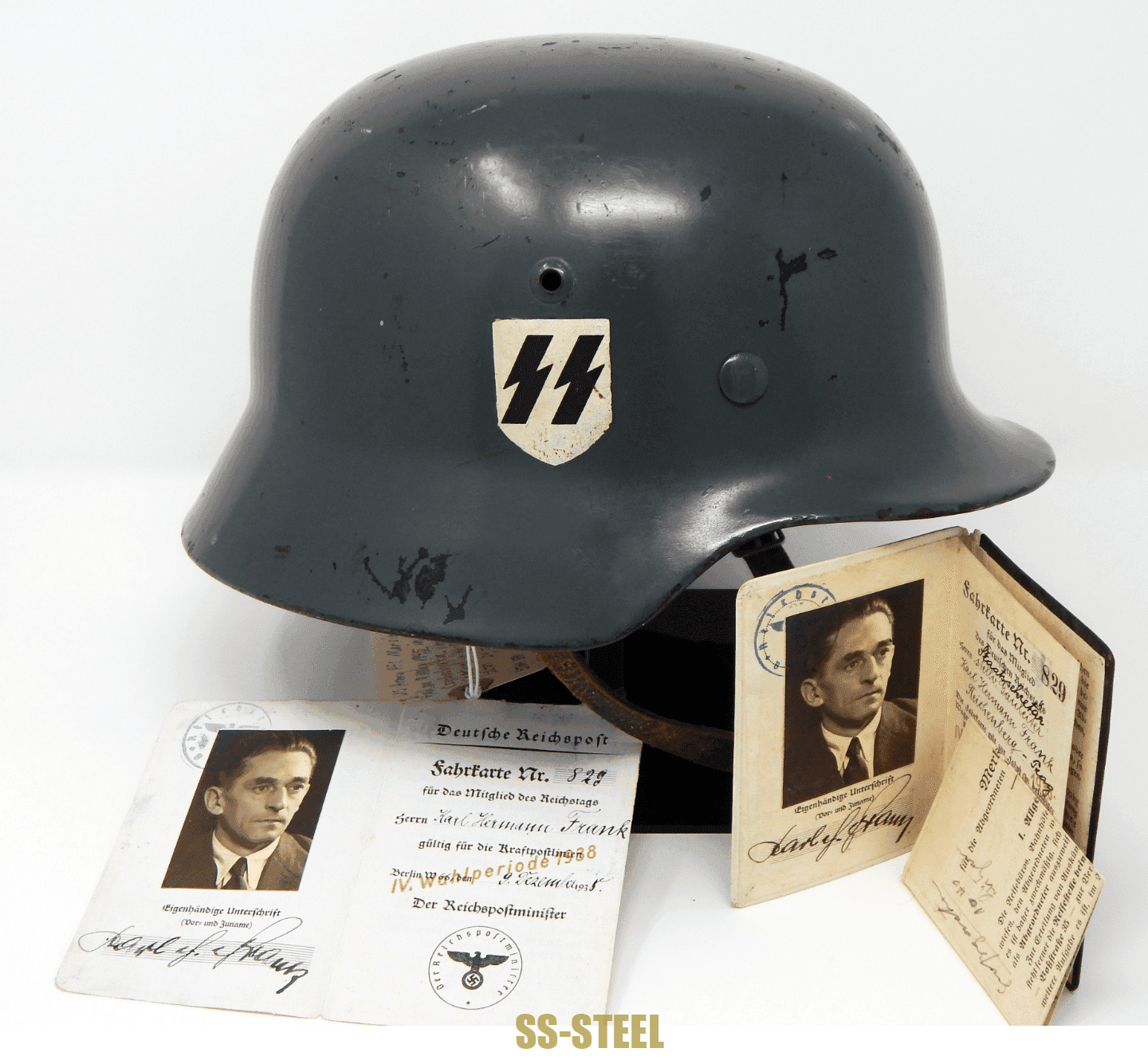
home – SS-Steel Inc.
click here to go to shop Testimonials "All spot on and I love it. I love helmets with character and this is the M40 I was looking for. Thank You and thanks on

WW2 German M40 Helmet Ballistic Test
Please check out my Patreon to help fund cool tests like this! https://www.patreon.com/MikeB128
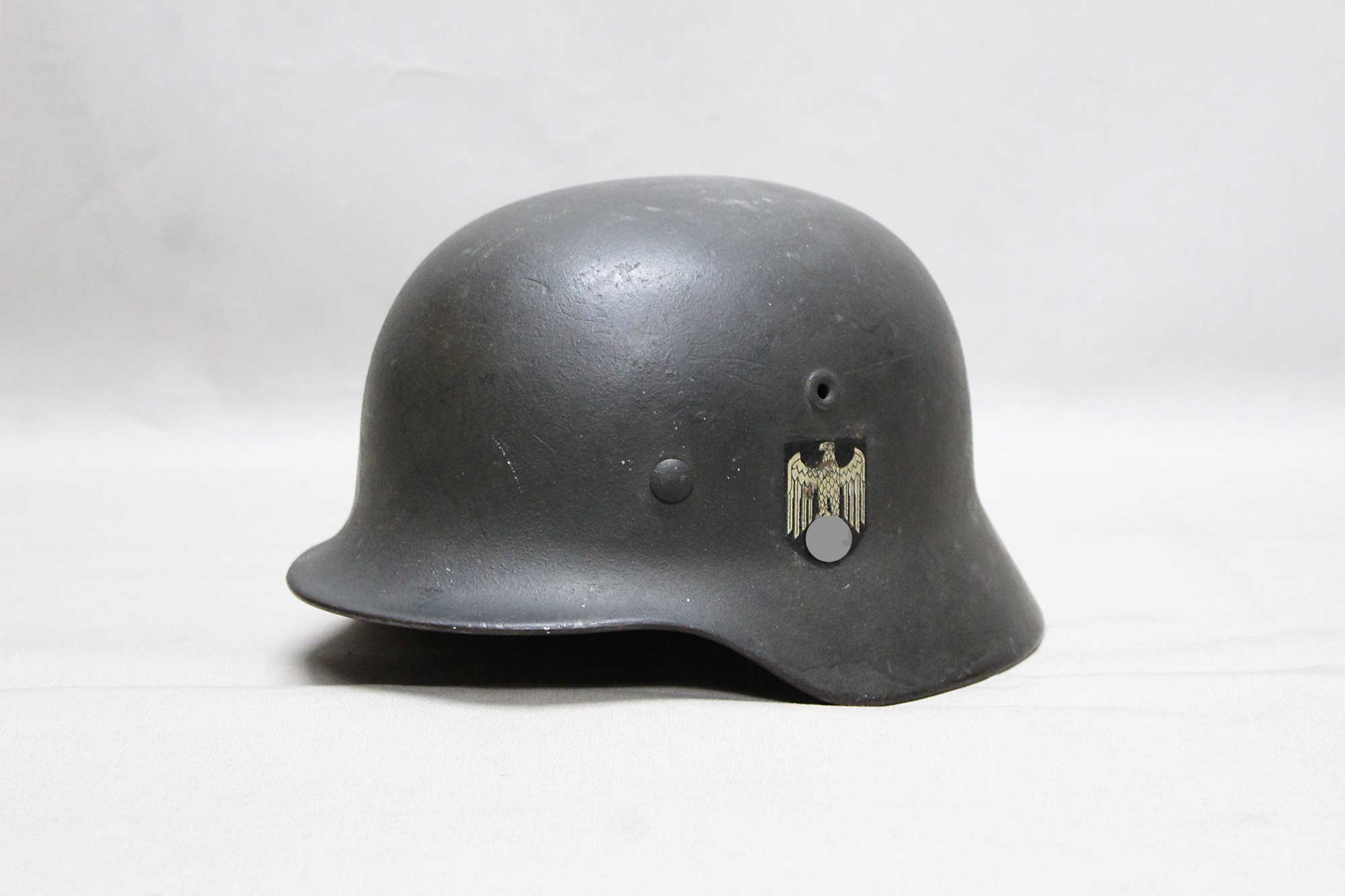
WW2 German Army M40 Combat Helmet NS64 . HG4085dw – Time Traveler Militaria
WW2 German Army M40 Combat Helmet. Army eagle decal in very nice condition. Exterior of helmet has very good condition slightly textured field-grey paint.

German WW2 Helmet – M40 EF66 Luftwaffe Named Helmet
See my new US Vet bring back M40 EF66 Luftwaffe Named Helmet to Leutnant Münch
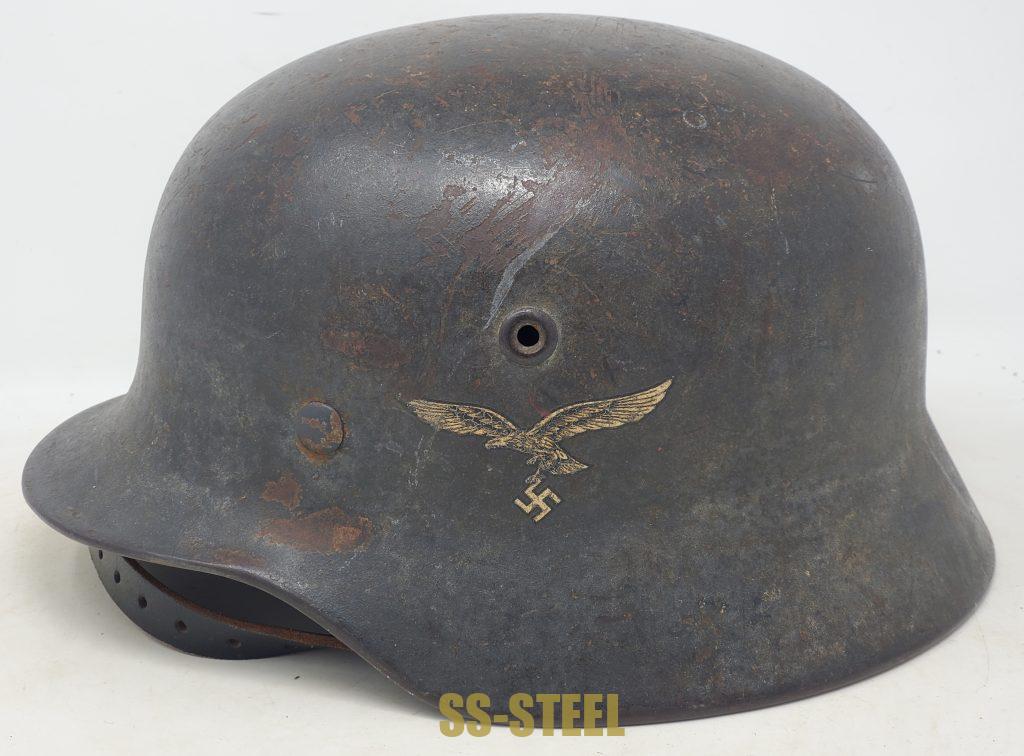
M40 Luftwaffe/RAD-Inscribed Helmet – SS-Steel Inc.
This is a sharp, well-service used Luftwaffe Q66 M40 helmet that was put to use in the National Labor Service or RAD (reichsarbeitsdienst). It Bears the rank of Foreman (abbreviated Vm), with the last name Gaertner. Based on this rank abbreviation in the helmet, it can be determined it was used by the RAD. Overall untouched and a great example. COA accompanies.
German WW2 Helmets and Caps – Steel Helmets – Epic Militaria
Range of German Stalhelm steel helmets. M35, M40, M42 soldiers helmets and liners. Reproduction German M38 Falschirmjager Para helmets. Waffen-SS, Afrika Korps headdress.

Combat models and makers
Contents of this page The different German combat helmet models explained in detailFactories and shell markingsInspection stamps I. Models M16 and M18 These 2 models were produced during …
M40 helmet info.
Good afternoon, I just picked up this 1940 Luft. N172 Q62 single decal rough texture outer shell helmet trying to get more info on it. Post war liner. All info welcome

Helmet Ballistic Test: Original WW2 German M40 Single Decal Luftwaffe Helmet.
This channel depends on your support, here are several ways to do so:Patreon: https://www.patreon.com/MikeB128Bitcoin: 173Yu7hxmPeCExhFdVhShXVt12SckfLebPMone…

WWII German M40 helmet vs Postwar Finnish M40 helmet!
This video is a comparison of an original WWII German M40 Q64 helmet shell vs a Postwar manufacturer size 64 M40 helmet. The postwar compares extremely well …
Stahlhelm Helmet Tropenhelm German Picklehaub Helmets for Sale
Oakleaf Militaria has a Stahlhelm Helmet for Sale and many other German World War II Helmets such as Tropenhelm and Picklehaub.
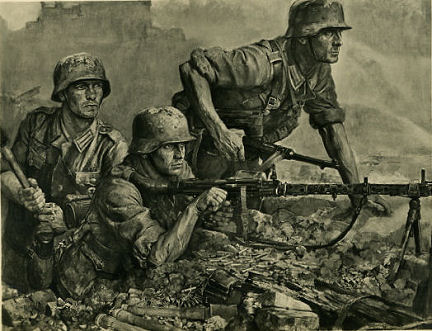
WWII German Helmets – Original WW2 Helmets – German War Helmet
100% original WW II German Helmets & Militaria – WWII German Helmets, German Army Helmets, Luftwaffe Helmets, Waffen SS Helmets, German Helmet Camo, WW2

Heer Helmets
CLICK HERE / INFO LINK : History of the Wehrmacht Observations : Factory paint color will differ between the helmet makers. For M35’s this can range from apple to pea green.Exist as doub…

Finnish Contract German M40 WWII Type Steel Helmet
This is a rare chance to own a genuine military issue German made M40 WWII style helmet for the almost the same price as a reproduction.

Original Rare WW2 German M40 Helmet Combat helmet | eBay
Original Rare WW2 German M40 Helmet Combat helmet. Condition is Used. Shipped with USPS Ground Advantage.

WWII German M40 Helmet Found in a Cellar
In this video I show you a helmet I found on eBay some time ago, I hope you like it!If you want to contact me about anything (mainly helmet related), here is…
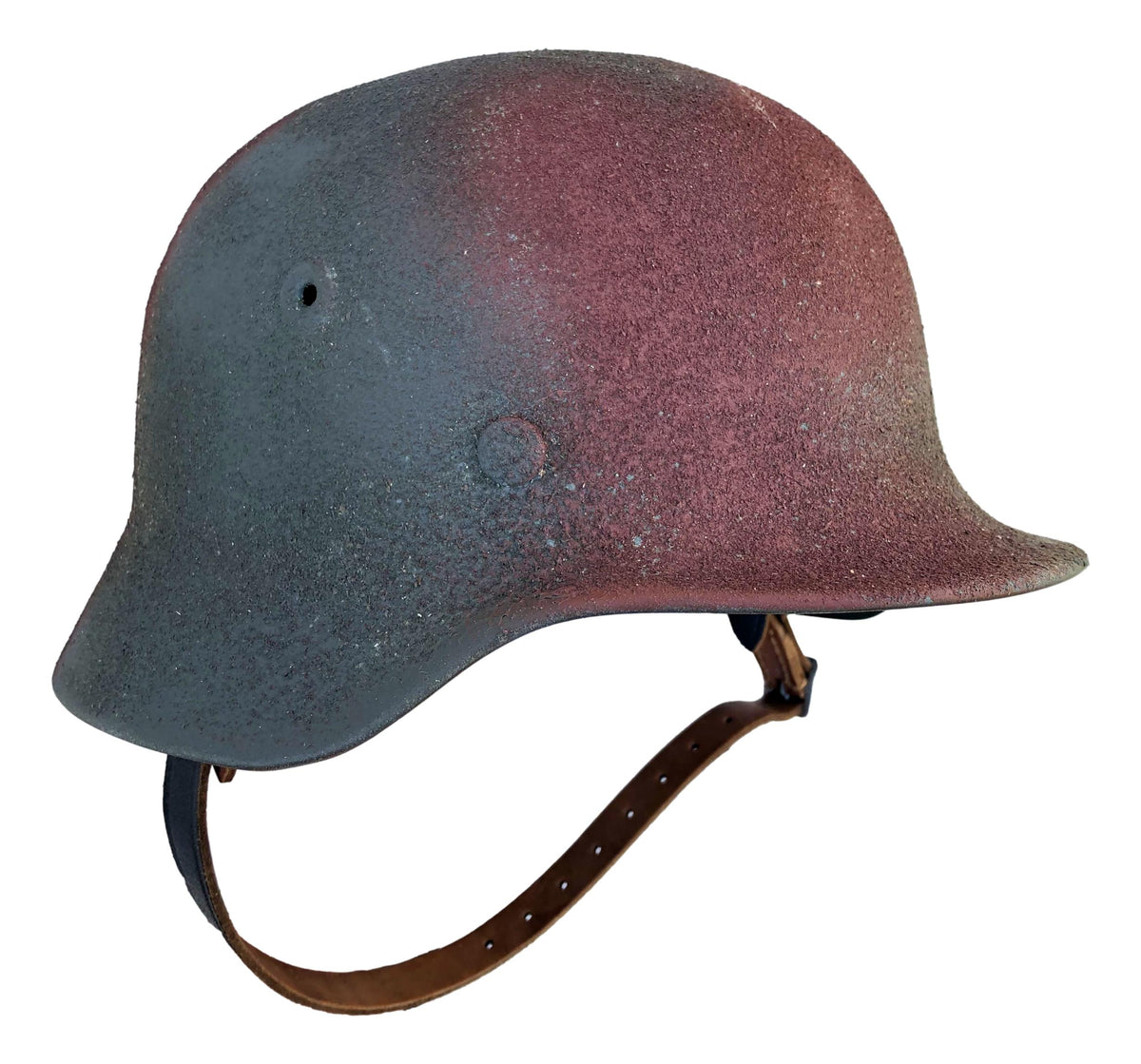
WW2 German M40 "Normandy" Rough Texture Camo Helmet. Size 57CM
They're back! After a few years of me not having time to do this, and back by popular demand, I've got a few of these puppies up for sale. What these are: The best possible option for a WW2 German Reenactor. These are original Finnish contract M40 shells that were made either in Germany during WW2, or on German equipm
Production Details 1 | german-ww2-helmet.com
All German helmets manufactured before 1942/1943 have the factory code and shell size stamped on the inside near the left chinstrap bale (D-ring). Later production of M40 and M42 helmets have the factory code stamped on the inside rear skirt above the lot number stamp. Early rivets were made of b…
Military Harbor – ww1 & ww2 german uniforms,helmets,insignias,badges,boots for reenactors,ww2 uniforms,wehrmacht uniforms,SS uniforms
WW1 German Uniforms,WW2 German Uniforms,SS Uniforms,Nazi Uniforms,Wehrmacht Uniforms,ww2 german caps,ww2 german helmets, ww2 german insignia, ww2 badge, boots and field gears for reenactors

German WWII M40 Stahlhelm found in a barn in Bavaria!
In this video I show you my latest find. An M40 helmet from a barn in Bavaria, close to Salzburg. And I also got some freebies with it as well.If you want to…
Original ww2 german m40 helmet for sale (new link)
I am parting with an old German N40 WW2 helmet. I have it listed on EBay. If interested please contact me via email or private message. http://www.ebay.com/itm/140902410158?ssPageName=STRK:MESELX:IT&_trksid=p3984.m1555.l2649

WWII German: Black M40 Helmet with Strap on Visor – 1:18 Scale Modular MTF Accessory for 3-3/4 Action Figures
miniature 1:18 scale weapons guns accessories military micro 1:18th action figures dio diorama
Helmets | Lakesidetrader
We are dedicated to buying and selling German WWII Helmets. Including: SS, Double Decal, Single Decal, Army, Luftwaffe, Navy & More!
M40 Helmet: Origins, Construction, and Fascinating Facts of WWII s Iconic Stahlhelm Military Antiques Toronto

German M40 helmet | Airborne
1940 model helmet, with typical 3 tone camouflage used by the german army in Normandy. This helmet was retrieved after liberation in a room of the Grand turc hostel, renamed John Steele, in Sainte-Mère-Eglise.
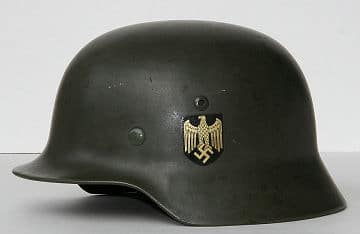
Helmet ID – German War Helmet – German Helmet ID
Easy steps in identifying authentic M35 M40 & M42 WW2 German Helmet examples. How to identify the different models, manufacturers & branch of service decals


